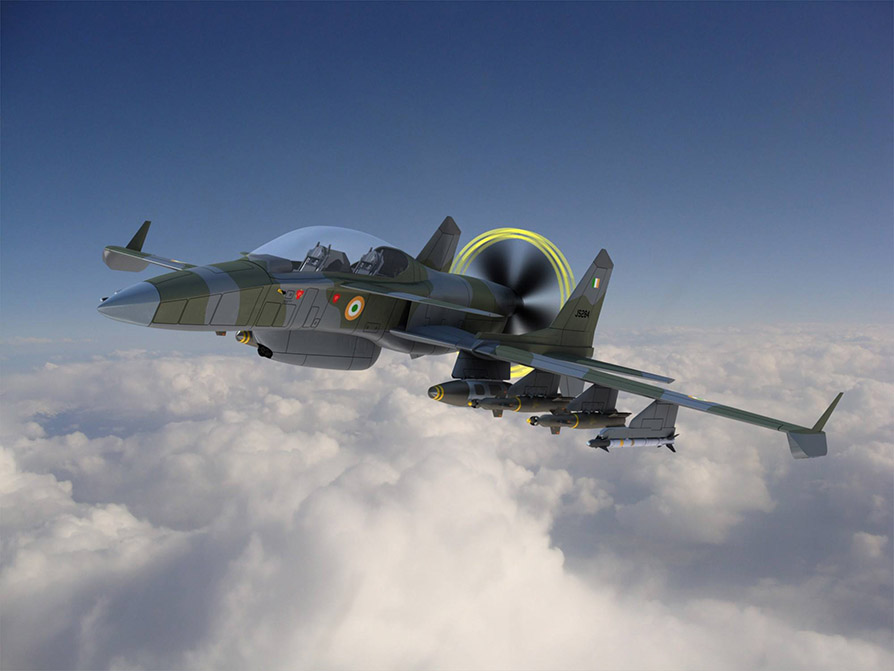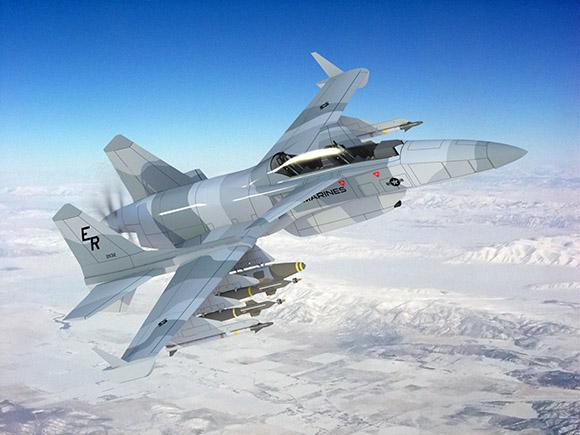The AX program aims at the realization, as happened for the A-10, of an armored asset capable of bringing in flight the most powerful airborne tactical weapon on the planet: the GUNling gun from 30mm to seven rotating barrels GAU-8 Avenger, capable of destroying any existing tank at 7 km away.
Proposed in the 2009 as part of an Air Force acquisition process for a hundred light attack aircraft to replace the A-10 in theaters where their particular operational profile was not required, the program was later the victim of budget cuts. The Air Force acquired twenty A-29s Super Tucano deployed in Afghanistan last year. The election of Donald Trump could boost the budget for a new fleet of light attack aircraft.
The conceptual idea behind the Machete, proposed in different variations in its innovative metallic foam, is the primary offensive system: the GAU-8 from 30 mm. The new Machete will also be proposed in its heavily armored variant that has ideally achieved the weight of an A-10. The latter version is believed to be able to withstand 23mm cannons and some 57 mm.
The previous OA-X program was not designed to replace the A-10 fleet, but to provide field commanders with a low-cost option to complement the Warthog. A momentary alternative, therefore, for a lightweight aircraft capable of carrying out all missions that do not require the degree of efficiency of the A10. The Air Force, meanwhile, will continue to develop the new Tactical Platform for Close Air Support in Replacing the 10 Warthog with the AX program.
The decision to start the AX program dates back to March 2015, when Air Force and the Pentagon elaborated the main options to replace the Warthog that will remain in service at least until the 2028 (constraint established by the Congress) and with the possibility to continue fighting until the 2040. The Pentagon continues to invest resources in the program Future of Close-Air Support which provides three possible alternatives: build AX, use current assets to meet CAS missions or extend the life of the 10 at least up to 2040 / 45.
The new CAS platform will have to be designed to provide close support in an environment that features modern and stratified defense systems. The A-10 today can only operate in permissive environments. The AX program, compared to the previous ones, also contemplates the possibility of upgrading existing cells that will have to meet the requirements set by the Air Force. If so, the Air Force, to save time and money, could point everything to one Warthog 2.0. A new platform therefore, which would preserve the current capabilities of the A-10, improving the criticalities such as, for example, the low power of the General Electric TF-34. The latter do not allow the A-10 to take off at full load.
The CAS role does not require hypersonic aerodynamic profiles. That's why the cruising speed (360 nodes ideally) will still have to be aerodynamically compatible with a tight turning radius at low speed. The new aircraft should be able to make a minimum of twenty attacks against infantry targets or eleven attacks on tanks during a single sortie. Furthermore, the Warthog 2.0 it may also be able to hit mobile targets at eight nautical miles away at altitudes above 20.000 feet. In terms of survival, any new generation CAS aircraft will still have two engines and redundant systems. It will have to survive even if hit by an SA-18 missile.
The proposal of the Aerospace Stavatti is spoiled by the single propeller, in the variants of propeller and turbine, inherited from the OA-X program.

(images: Stavatti Aerospace Ltd)












